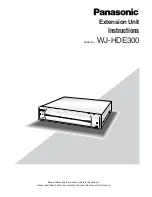
Hydra eSATA Introduction
1.5.3 Changing the RAID Mode
The RAID mode should be set after installing the drives and before first formatting the drives. Also,
when adding more drives at a later point, the RAID mode has to be re-selected and confirmed
again in order for the new drives to be added to the RAID array.
1. Turn on the power and wait for the device to start up.
2. Press and hold the CONFIRM button for about 3 seconds, until the three RAID mode LEDs
start blinking.
3. Use the MODE button to select the new RAID mode and press the CONFIRM button within
10 seconds of releasing the MODE button to confirm the new setting.
4. When changing the RAID mode, the LEDs will indicate the selected mode. If all three
(BIG/FAST/SAFE) LEDs are off, it indicates Non-RAID. The sequence always starting with
the FAST mode is as follows: RAID 0 - RAID 1/10 - RAID 5 - Non-RAID - JBOD.
5. Format the drives.
Note
Changing the RAID mode requires re-formatting the drives. Make sure to backup all data first!
1.6 RAID Modes
For RAID 0/1/10/5, hard drives of identical capacities are recommended. If the capacities are
different, the total amount of the space that can be used will depend on the drive with the smallest
capacity.
Note
It is not possible to add more drives to an existing RAID array without re-formatting it. When adding
additional drives at a later point, they will be mounted as independent volumes until the
corresponding RAID mode has been selected again and the drives have been re-formatted.
1.6.1 Non-RAID (PM)
The drives show up as independent volumes. Each drive can be formatted and accessed
separately. If one drive fails, the others are not affected. This setting does not provide any
performance or redundancy benefits.
Æ
1-4 drives
1.6.2 JBOD - Disk Spanning (BIG)
The drives show up as one large single volume, combining the capacities of all drives. Spanning is
an array (not RAID) that is written sequentially across the drives. By itself, it does not provide any
performance or redundancy benefits. It is ideal for drives with different capacities, making use of
the maximum storage capacity. However, if one drive becomes damaged, the whole array can
become corrupted.
Æ
1-4 drives
Page 3



























